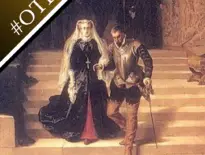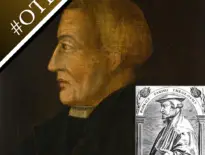On this day in Tudor history, 7th February, Sir Thomas More, Henry VIII's famous Lord Chancellor, was born, Mary, Queen of Scots was informed she'd be executed the next day, and Henry VIII took part in the Shrovetide joust with the motto "Declare I dare not"...
- 1477 or 1478 - Traditional birthdate of Sir Thomas More in Milk Street, London. More was made Henry VIII's Lord Chancellor after the fall of Cardinal Wolsey in 1529, but ended up being executed as a traitor on 6th July 1535 after refusing to take the Oath of Succession. See video below.
- 1526 – Shrovetide Joust and what is thought to be the first indication of Henry VIII’s courtly pursuit of Anne Boleyn. Henry VIII rode out in cloth of gold and silver “richely embraudered, with a mannes harte in a presse, with flames about it, and in letters were written, Declare ie nos, in Englishe, "Declare I dare not”. See video below.
- 1587 – Sir Amyas Paulet read out Mary, Queen of Scots' death warrant to her, and informed her that she would be executed the following day. Read more....
- 1591 – Burial of Sir Nicholas Bagenal (Bagnal), soldier and Marshal of the army in Ireland in the reigns of Edward VI and Elizabeth I. He was buried at Newry.
- 1594 – Death of Barnabe Googe, pastoral poet and translator. He was buried at c*ckerington church, near Alvingham. Googe's works included a dedicatory poem in Thomas Gressop's translation of Nicolaus Cabasilas, “A briefe treatise, conteynynge a playne and fruitfull declaration of the popes usurped primacye”, a translation of Zodiacus vitae by Marcellus Palingenius, and his “Eglogs, Epytaphes, and Sonettes”.
- 1623 – Death of Thomas Cecil, 1st Earl of Exeter, courtier, soldier and eldest son of William Cecil, 1st Baron Burghley, probably at Wimbledon. He was buried in the St John the Baptist Chapel, Westminster Abbey. His offices under Elizabeth I included High Sheriff of Northamptonshire, Lord Lieutenant of Yorkshire, Lord President of the Council of the North and Knight of the Garter.



Leave a Reply